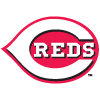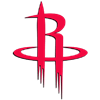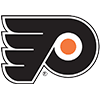Note: this won't be a traditional MLB Barometer, with paragraphs on 10 risers and fallers based on their recent performance. Instead, I've spent the week digging into Statcast's new bat tracking leaderboards in attempt to figure out how to best use them for fantasy purposes. You'll find a handful of potential future risers and fallers at the end of today's column.
Had Statcast's bat-tracking been released a few years ago rather than a few days ago, one of the following two storylines would be all over the fantasy landscape right about now:
- Paul Goldschmidt has had a very rough first six weeks, and the underlying numbers look bad too, but at least his bat speed hasn't dropped compared to last season, so there's reason to hold out hope for a turnaround.
- Paul Goldschmidt has had a very rough first six weeks, and the underlying numbers look bad too, and given that his bat speed is also down compared to last season, this looks like the beginning of the end for the 36-year-old.
Even the most skeptical observers after the new leaderboards were released at the start of this week should be able to see that future use case. As things stand, bat speed is only available from this year forward, so comparisons to last season aren't possible. And many of the possible use cases for raw bat speed are unlikely to add value beyond the metrics we already have, so some skepticism is certainly warranted. (Shocker: hard swings correlate with
Note: this won't be a traditional MLB Barometer, with paragraphs on 10 risers and fallers based on their recent performance. Instead, I've spent the week digging into Statcast's new bat tracking leaderboards in attempt to figure out how to best use them for fantasy purposes. You'll find a handful of potential future risers and fallers at the end of today's column.
Had Statcast's bat-tracking been released a few years ago rather than a few days ago, one of the following two storylines would be all over the fantasy landscape right about now:
- Paul Goldschmidt has had a very rough first six weeks, and the underlying numbers look bad too, but at least his bat speed hasn't dropped compared to last season, so there's reason to hold out hope for a turnaround.
- Paul Goldschmidt has had a very rough first six weeks, and the underlying numbers look bad too, and given that his bat speed is also down compared to last season, this looks like the beginning of the end for the 36-year-old.
Even the most skeptical observers after the new leaderboards were released at the start of this week should be able to see that future use case. As things stand, bat speed is only available from this year forward, so comparisons to last season aren't possible. And many of the possible use cases for raw bat speed are unlikely to add value beyond the metrics we already have, so some skepticism is certainly warranted. (Shocker: hard swings correlate with high exit velocities.)
However, getting in early and trying to figure out some use cases for bat-tracking data while it's still so new seems sure to lead to good things for our fantasy teams, provided it's done responsibly.
An irresponsible use would be to suggest that players with high bat speeds are good and those with low bat speeds are bad, full stop. Giancarlo Stanton has the highest average bat speed in the league (80.6 mph), and the difference between him and Oneil Cruz (77.9 mph) in second is larger than the difference between Cruz and Bobby Witt Jr. (75.3 mph) in 21st. You'd be hard-pressed to make the case that Stanton is anywhere near the best hitter in the league at this point in his career, however, and few would put Cruz anywhere near there either.
Likewise, Luis Arraez (62.5 mph) is an outlier by 1.9 mph on the other end, but while he certainly has his limitations, he's much closer to the best hitter in baseball than the worst. Arraez also leads the league in "Squared-up Rate," also released this week in both per-swing and per-contact form, but we'll leave that one alone for now and tackle just one new metric at a time.
It should be clear from common sense alone that pure bat speed has to be combined with other variables to tell us something useful. The natural place to start is with Swing Length, which was also released by Statcast this week. You might think that batters who swing hard with direct paths should be the best, while hitters with soft swings and longer bat paths should struggle, for example.
I took a look at the 303 hitters who have had at least 100 competitive swings and divided them into nine groups according to their average bat speed and swing length, with each variable being split into equal thirds. Here is how the hitters in each category have fared by wRC+ this season:
Direct Bat Path | Med. Bat Path | Long Bat Path | All | |
| Fast Swing | 103 | 117 | 107 | 110 |
| Medium Swing | 96 | 99 | 100 | 98 |
| Slow Swing | 97 | 92 | 102 | 97 |
| All | 97 | 104 | 104 | 102 |
Through six weeks of the season, hard swingers are clearly faring best, but players with a direct bat path are faring worse than those with a medium or long one. Hard swings with medium-length bat paths are doing best, while soft swings with the same medium-length bat paths are faring worst. And soft swings with long bat paths, the most obvious group to worry about, are doing just fine.
The above chart is likely partially explained by the fact that I've only included players who have earned enough playing time to make 100 competitive swings this season. It's likely that long, slow swings are bad in general, but the players who have become major-league regulars despite those traits are doing other things well. It's also been pointed out, such as in this article by Robert Orr at Baseball Prospectus (more from him in just a minute), that since swing length measures from the start of the swing to the point of contact, players who deliberately contact the ball out front in search of pulled flyballs will show up as having longer swings even if their bat gets to the front of the plate in reasonable time.
In fact, it's easy to find good-to-great hitters in each of the nine groups. Here are three notable examples from each of them:
Examples | Direct Bat Path | Med. Bat Path | Long Bat Path |
Hard Swing | |||
Medium Swing | |||
Soft Swing |
My proposal for where to look to find fantasy gems on the bat-tracking leaderboards is to combine swing speed with other process stats, specifically those which look at a similar part of the process. For now, I don't want to combine batted-ball data (which includes the new "Squared-up %" and "Blast %" metrics) with swing-speed data, because bat speed tells us a lot about batted balls on its own. Instead, I want to look at three things:
- Is the player good at deciding whether or not to swing?
- Does he swing hard?
- Does his swing connect with the baseball?
For step three, we can use Contact% or Whiff%. For step two, as of this week, we have swing-speed data. And for step one, we have Robert Orr's SEAGER metric, which won him a well-deserved Contemporary Baseball Analysis Award from SABR when he created it last year. Here's his introductory article, and here's an excellent Sam Miller article explaining the metric as well. For those uninterested in the full breakdown, SEAGER credits players for correctly choosing whether or not to swing, which basically means swinging at strikes and taking balls, but there's more nuance due to the count and the precise location of the pitch.
Eventually, someone may come along with some sort of fancy math and properly weight these three variables (or variables like them), incorporating them into an all-in-one metric which looks at the entirety of a hitter's process up to the point where the bat makes contact with the ball. We would then be able to check a player's results against his batted-ball data while also checking his batted-ball data against everything that happens up to the moment of contact. That will offer us two different ways to search for players who are doing everything right but having bad results (i.e. buy-lows) and players who are doing well despite a process which suggests otherwise (i.e. sell-highs).
In the absence of a fancy formula, how about some filtered spreadsheets instead? Let's start by looking at some examples of players whose process in terms of the three elements outlined above (swing decisions, bat speed, and ability to make contact) are out of alignment with his results. The players making good decisions, swinging hard and making plenty of contact but not yet finding success are the ones we're after, and the players making poor decisions, not swingers hard and failing to make enough contact yet still succeeding are the ones we're looking to trade away. But just to make sure the methodology makes sense, let's start with a look at the players with whose processes do in fact match their results:
| Good Process, Good Results | Team | PA | SEAGER percentile | Bat Speed Percentile | Whiff Percentile | wRC+ |
| Kyle Tucker | HOU | 183 | 94 | 57 | 74 | 182 |
| Juan Soto | NYY | 196 | 89 | 96 | 68 | 172 |
| LaMonte Wade | SFG | 131 | 80 | 52 | 58 | 170 |
| Alec Bohm | PHI | 175 | 66 | 60 | 93 | 162 |
| Salvador Perez | KCR | 168 | 86 | 74 | 54 | 160 |
| Josh Naylor | CLE | 173 | 85 | 66 | 67 | 156 |
| Connor Joe | PIT | 138 | 54 | 63 | 70 | 152 |
| Brandon Nimmo | NYM | 178 | 85 | 68 | 61 | 132 |
| Ryan Mountcastle | BAL | 159 | 54 | 91 | 54 | 127 |
| Yordan Alvarez | HOU | 184 | 81 | 94 | 71 | 120 |
| Pete Alonso | NYM | 175 | 59 | 88 | 62 | 118 |
| Daulton Varsho | TOR | 143 | 74 | 70 | 59 | 117 |
| Dylan Moore | SEA | 114 | 89 | 66 | 57 | 106 |
This first table shows players whose processes have been good at every step, and who have performed well. To qualify, a player had to be above-average in all three of SEAGER, swing speed and whiff rate, all three of which are displayed in percentile form on the table above. The list features a good mix of players we expect to be top-tier hitters such as Tucker, Soto and Alvarez and a few whose hot starts look even more interesting in this context. Bohm looks like a breakout in this light, as he's combined solidly above-average swing decisions and bat speed with an elite ability to make contact. Naylor, similarly, is making outstanding swing decisions while displaying solidly above-average bat speed and contact ability.
| Bad Process, Bad Results | Team | PA | SEAGER percentile | Bat Speed Percentile | Whiff Percentile | wRC+ |
| Ezequiel Tovar | COL | 180 | 42 | 29 | 3 | 99 |
| Carlos Santana | MIN | 150 | 33 | 29 | 43 | 96 |
| Jeimer Candelario | CIN | 145 | 13 | 11 | 27 | 94 |
| Zach Neto | LAA | 154 | 34 | 44 | 30 | 88 |
| Harrison Bader | NYM | 121 | 17 | 27 | 41 | 87 |
| Nick Gordon | MIA | 110 | 34 | 11 | 26 | 82 |
| Dansby Swanson | CHC | 144 | 43 | 35 | 8 | 82 |
| Mike Yastrzemski | SFG | 109 | 39 | 38 | 23 | 80 |
| Harold Ramirez | TBR | 142 | 35 | 49 | 18 | 77 |
| Brayan Rocchio | CLE | 140 | 37 | 15 | 50 | 74 |
| Johan Rojas | PHI | 126 | 23 | 35 | 50 | 71 |
| Nick Castellanos | PHI | 177 | 48 | 26 | 6 | 70 |
| Ceddanne Rafaela | BOS | 153 | 18 | 26 | 20 | 65 |
| Bo Naylor | CLE | 119 | 22 | 38 | 9 | 59 |
| Christian Encarnacion-Strand | CIN | 123 | 17 | 44 | 24 | 38 |
| Tim Anderson | MIA | 128 | 37 | 21 | 10 | 31 |
The second table shows the opposite: players who have been sub-par at every part of the process we're looking at and have poor results to show for it. I see little reason to expect much from any of these players at the plate, though some of them can at least run. If you're looking for reasons to buy into a Castellanos or Bo Naylor bounceback, for example, this certainly won't offer reason for encouragement. Likewise for Candelario, who looks hard-pressed to maintain even a 94 wRC+ if he continues to struggle so significantly with swing decisions, bat speed and whiffs all at the same time.
| Good Process, Bad Results | Team | PA | SEAGER percentile | Bat Speed Percentile | Whiff Percentile | wRC+ |
| Yandy Diaz | TBR | 186 | 78 | 62 | 98 | 99 |
| Yainer Diaz | HOU | 162 | 73 | 62 | 68 | 97 |
| Lars Nootbaar | STL | 121 | 55 | 57 | 88 | 91 |
| Corey Seager | TEX | 177 | 64 | 52 | 54 | 90 |
| Eloy Jimenez | CHW | 123 | 82 | 85 | 64 | 88 |
| Wyatt Langford | TEX | 129 | 57 | 81 | 73 | 68 |
| Corbin Carroll | ARI | 183 | 57 | 82 | 82 | 61 |
| Jack Suwinski | PIT | 138 | 55 | 75 | 51 | 54 |
And finally, the good stuff, the bit that justifies filing this article under the "MLB Barometer" title. These hitters are above-average in all three process stats but have below-average results at the plate. It's difficult to envision a player who continues to do all three things well continuing to struggle, so as long as these players' processes remain intact, the results should follow sooner or later. If you're using bat speed to find potential buy-low targets, this is where I'd start.
There are several interesting names on this list, but Carroll is the most significant. If you were worried about the shoulder scare he suffered last season, does the fact that his bat speed remains quite strong assuage those concerns somewhat? His hard-hit rate has dropped from 40.9 percent to 31.3 percent, and we don't have the ability to compare his bat speed to last year, but his combination of 82nd percentile bat speed and 82nd percentile contact should lead to better results soon, especially when combined with above-average decision-making.
Multiple other names on the table above catch the eye. If you were worried about Seager after his slow start, the fact that he's still above-average across the board during his slump is notable, even if he's fallen quite far from leading the league in SEAGER last year. Meanwhile, Langford's slow start looks much less discouraging in this light, while there's seemingly still reason to believe in players like Yainer Diaz, Nootbaar and Suwinski, who all showed promise last season but haven't done much this year. And if you haven't completely given up on Jimenez's ability to stay on the field, it might be worth sending a trade offer for him while his value is at its lowest.
| Bad Process, Good Results | Team | PA | SEAGER percentile | Bat Speed Percentile | Whiff Percentile | wRC+ |
| Max Muncy | LAD | 163 | 49 | 44 | 14 | 129 |
| Richie Palacios | TBR | 120 | 47 | 17 | 21 | 127 |
| Willi Castro | MIN | 154 | 18 | 27 | 34 | 124 |
| Michael Busch | CHC | 152 | 38 | 17 | 13 | 122 |
| Jesse Winker | WSN | 161 | 41 | 15 | 46 | 108 |
| Brandon Marsh | PHI | 141 | 21 | 50 | 40 | 107 |
| Logan O'Hoppe | LAA | 138 | 43 | 32 | 13 | 106 |
Finally, the supposed sell-highs. These hitters are average or worse in all three process stats yet have nevertheless found success at the plate this season. It's unlikely that many of them will repeat their success if they continue to make poor swing decisions and have soft swings that don't make frequent contact with the ball. This list therefore throws cold water on several apparent early-season breakouts, some of whom have already started to cool down.
Busch has a 63 wRC+ over his last 23 games, for example. If he continues to make poor decisions while swinging a slow bat and whiffing constantly, that recent slump will only continue to deepen. Winker similarly owns a 40 wRC+ over his last 10 contests after swinging a hot bat in the first three weeks. A very slow swing combined with sub-par swing decisions and contact ability means such struggles aren't much of a surprise.


































